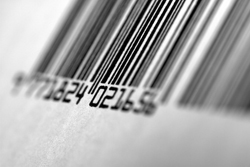Traceable cotton t-shirt
An illustrated T-shirt case study (see opposite page) shows how this works in practice. As becomes apparent, the T-shirt’s main components can be tracked back, in a step-by-step process, through to origins of the supply chain.
Here, we can trace back to the facility of the cotton processor. This is also possible if a garment consists of multiple ingredient components; as for instance would be the case for an outdoor jacket that includes zips, buttons, and multiple layers of fabric.
With this kind of information available at each processing step, the only missing piece in this jigsaw is a platform that brings it all together, creating a single, integrated traceability thread.
Once such a system is put in place and integrates all the different pieces of data, and with all the information recorded along the life journey of this T-shirt, it will be possible for end-consumers to identify not only where their T-shirt was sewn, but even from which farm the cotton in the T-shirt originally came from.
A challenging future
Traceability remains a difficult topic. How much detailed data do we need before we can generate meaningful information? And just because we can record information, does this imply that we should do so?
There is no doubt new technologies have progressively come into use at critical supply chain stages: be it for work in progress at the supplier, or in semi- or fully automated warehouses.
There are, however, challenges that come with tracking production.
The apparel industry has a record of drifting towards ever cheaper, and therefore low-tech, sourcing countries. This in turn means that integrated automation will likely not consistently be available, and manual work will be required – annihilating any hope that traceability may ‘efficiently’ and ‘effectively’ become a scaled out reality rather sooner than later.
Acquiring, managing, and using large amounts of data further comes with privacy and usefulness concerns. And is more data really equivalent to more information and insights? It would make sense, it seems, to try and leverage and integrate the already collected information in the best possible way, to enable traceability to reach as far as we can with what we have already.
This article was first published in the October/November 2015 issue of Ecotextile News, page 64. For more information and to subscribe, click here.







